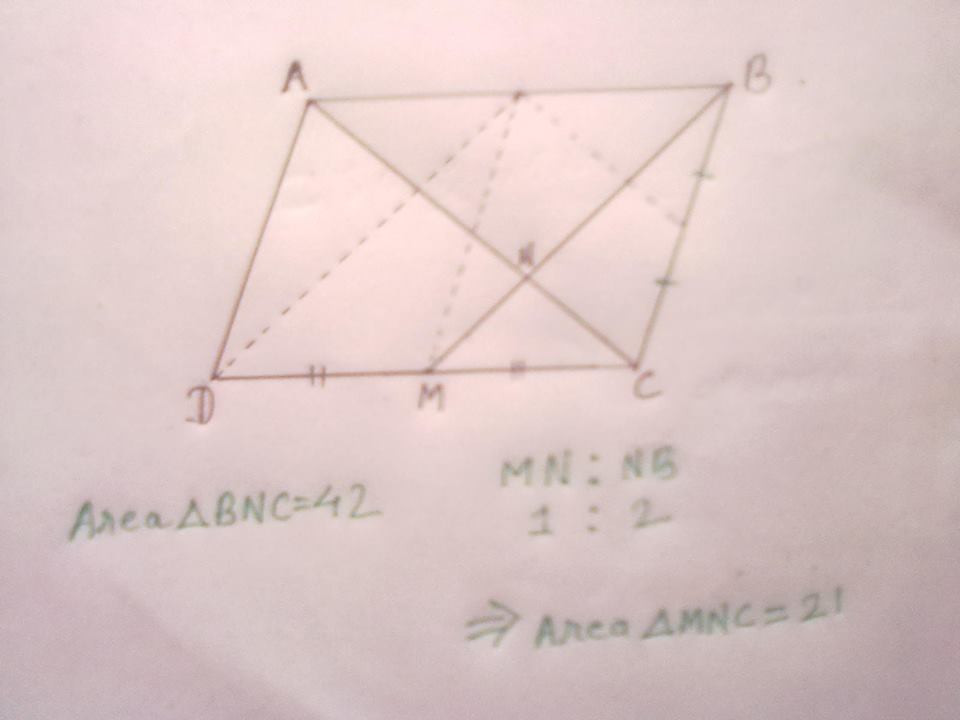Geometry problem #60059
In the diagram to the right, quadrilateral is a parallelogram and is the midpoint of
If the area of is what is the area of
This section requires Javascript.
You are seeing this because something didn't load right. We suggest you, (a) try
refreshing the page, (b) enabling javascript if it is disabled on your browser and,
finally, (c)
loading the
non-javascript version of this page
. We're sorry about the hassle.
MN:NB=1:2 => area triangle MNC=21